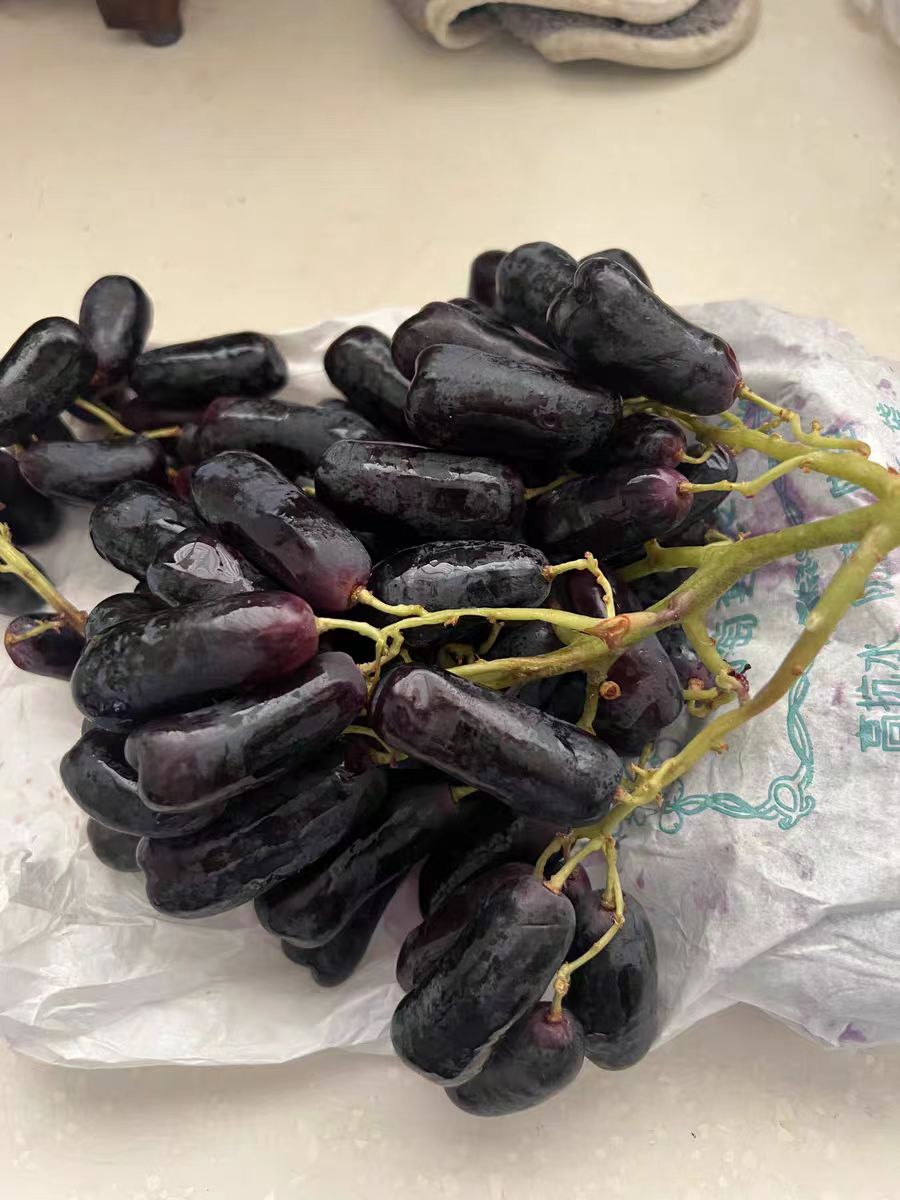Planting a few grapevines in the courtyard allows you to enjoy the cool shade in summer and harvest sweet and sour fruits in autumn – it sounds delightful just to imagine. However, many friends may worry about not having time for maintenance. In fact, as long as the right varieties are selected, even "lazy gardeners" can easily grow good grapes. Today, let’s discuss how to choose grape varieties for courtyard planting, especially those "low-maintenance" varieties suitable for lazy gardeners.
When selecting grape varieties, several key factors need to be thoroughly considered. Our country has a vast territory with significant climatic differences between the north and south. For example, in the rainy and humid south, varieties with strong disease resistance should be chosen to avoid frequent illnesses; in the cold northern winters, cold-resistant varieties are essential to prevent freezing during winter.
Different grapes also have varying growth habits. Some varieties have extremely vigorous shoot growth, requiring more pruning to control their development, while others grow more "neatly," making management simpler. In terms of fruiting, some varieties are highly fertile with stable yields, giving novices a greater sense of achievement.
When it comes to grape varieties suitable for courtyard planting, several classic ones deserve mention.
Kyoho Grape: A familiar variety in the market, it boasts good disease resistance, particularly against anthracnose and black (black pox disease). The fruits are large, weighing about 10 grams each, with (dark purple) skins and a strawberry aroma, making them delicious for fresh consumption. However, it requires slight pruning – simply tidying up the shoots before flowering can improve fruiting.
Summer Black Grape: A "relative" of Kyoho, it is an early-maturing variety that can be harvested quickly. Its greatest advantage is being seedless, with firm, crispy, sweet flesh and a strawberry scent. It also stores well, remaining fresh for several days after picking. To make the fruits larger, "expansion treatment" may be needed, but regular pruning is uncomplicated and manageable for novices.
Sun Muscat Grape: This variety has gained great popularity in recent years due to its strong rose fragrance. The yellow-green fruits are visually appealing, sweet and crispy, making them an excellent gift. It also has good disease resistance, though it requires slightly more attention during the growing period – such as proper shoot pruning and ensuring adequate water and nutrients – to produce high-quality fruits.
Fujiminori Grape (also known as "Ping-Pong Grape"): As the name suggests, its fruits are extremely large, weighing about 20 grams each, with the largest reaching 30 grams. The dark purple skins cover thick, sweet-and-sour flesh. It is relatively disease-resistant, but to ensure uniform fruit size, flower and fruit thinning is needed during the flowering and fruiting stages to concentrate nutrients.
For busy individuals or those who prefer minimal maintenance, the following varieties are not to be missed:
Moldova Grape: It is (simply) a "blessing for lazy gardeners," with (superior) disease resistance – particularly against common diseases like downy mildew and powdery mildew. Even in the rainy south, it rarely falls ill, requiring almost no pesticide use. The blue-black fruits are medium-sized; while not extremely sweet, they are suitable for fresh consumption or winemaking. Daily management is extremely simple: apply base fertilizer once a year, and pruning does not need to be meticulous – casual trimming is sufficient for healthy growth.
Golden Finger Grape: Named for its finger-like fruits, it has yellow-green skins, firm and crispy flesh, and a honey-like aroma, offering a unique taste. It also has good disease resistance, with main attention needed for downy mildew during the rainy season. Regular pruning involves simple tasks like tying shoots and pinching to control growth. Fertilization does not need to be frequent; organic fertilizers are preferred, making it both low-maintenance and visually appealing.
Beta Grape: A great choice for northern gardeners worried about winter freezing. It is highly cold-resistant, able to survive safely in environments as low as -30°C without needing soil burial for (cold protection), saving much winter hassle. Although the fruits are small, they ripen early and have a sweet-and-sour flavor, suitable for both fresh eating and winemaking. Pruning and fertilization are simple: apply base fertilizer once a year and perform basic shoot trimming, making it ideal for lazy northern gardeners.
As long as the right varieties are chosen and basic planting techniques are mastered, even lazy gardeners can easily harvest grapes in their courtyards. Varieties like Moldova, Golden Finger, and Beta are disease-resistant and easy to manage. With attention to selecting a good location and simple fertilization and watering, the grapevines will thrive and bear abundant fruits, offering both ornamental beauty and delicious rewards – a twofold benefit.
What grape varieties should be chosen for courtyard planting?

Share with
Tagged in :




Leave a Reply